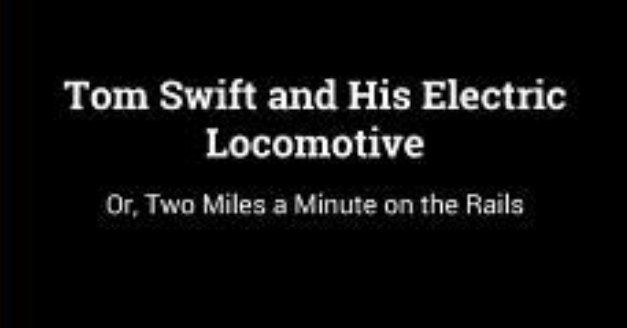CHAPTER III — Tom Swift and His Electric Locomotive
byCHAPTER III – Tom Swift and His Electric Locomotive begins with a quieter but equally important moment, as Tom visits Mary Nestor to discuss recent developments. Their conversation shifts between excitement and concern as Tom recounts not only the ambitious electric locomotive proposal but also his brush with a nighttime thief. Mary, ever supportive, listens carefully and is relieved when Tom reveals that the stolen notes were indecipherable due to being written in his own private shorthand. The idea of the thief opening the pages only to find incomprehensible scribbles brings a brief smile to an otherwise tense moment. Tom assures her that everything essential remains safe in his memory, a testament to his discipline and sharp recall. Despite the potential threat, Tom remains focused on the larger opportunity ahead.
Mary’s presence in the story does more than offer emotional support; it adds warmth to Tom’s otherwise intense pursuits. She’s one of the few characters who sees Tom beyond his inventions and responsibilities. Her concern serves as a subtle reminder of the personal risks involved in innovation. Tom’s calm response and clever preparation reflect his maturity and forward-thinking nature. Even as danger looms, he never loses sight of the importance of clear planning and self-reliance. This trait is what sets him apart—not just as an inventor, but as a dependable figure to those around him. Before departing, he reassures Mary of his safety, carrying with him not just tools, but a carefully honed mindset.
The narrative quickly accelerates when Mr. Damon arrives unexpectedly in his car. Offering Tom a ride, the gesture appears routine until a second encounter with the thief turns the situation dangerous. As they prepare to leave, the same assailant confronts them, clearly determined to intimidate or steal once more. Mr. Damon’s sudden reaction behind the wheel causes the car to lurch forward, throwing the thief off balance. At that moment, Tom’s quick action with an ammonia pistol disables the attacker, who flees the scene disoriented. The event is brief but powerful, illustrating the importance of readiness when innovation attracts unwanted attention.
This attack is more than just a plot device; it speaks to the realities faced by inventors working on groundbreaking ideas. As new technologies emerge, so too do those who seek to steal or sabotage them. Tom’s preparedness demonstrates a realistic layer of self-defense that often goes overlooked in stories of invention. His ammonia gun isn’t just a gadget—it symbolizes a larger lesson about the need to protect intellectual property and oneself. In today’s terms, it’s akin to safeguarding digital files or patent documents from cyber threats or corporate espionage. Tom’s physical tools are simple, but the principles behind them remain incredibly relevant.
Following the encounter, Tom and Mr. Damon regain composure and continue their way to Ned Newton’s home. Ned, known for his financial expertise and business instincts, will be Tom’s key partner in organizing the project’s next phase. They aim to discuss drafting a contract and assessing potential capital requirements. The electric locomotive is no small feat—it involves cutting-edge design, cost analysis, and likely, overcoming the limits set by competitors like the Jandel model. Tom believes his design will exceed existing standards in power, speed, and terrain compatibility. It’s not just about building a train—it’s about redefining how rail transport adapts to evolving infrastructure needs.
Tom’s vision aligns with broader trends in the early 20th century when industries began replacing steam engines with cleaner, more efficient systems. The idea of a high-speed electric locomotive running through rugged landscapes reflects not only technical ambition but also environmental foresight. The era’s growing awareness of fossil fuel limitations made projects like Tom’s all the more significant. Electrification promised better energy control, quieter operations, and reduced reliance on unstable fuel markets. Tom’s design is being crafted with this vision in mind, blending innovation with long-term relevance. His actions embody a strategic mindset—solving present-day problems while preparing for future demands.
By the chapter’s end, readers are left with a blend of suspense and inspiration. Tom has shown not only technical brilliance but also quick thinking under pressure and a deep sense of responsibility. The story reminds us that behind every ambitious project is a series of personal challenges—some emotional, others dangerous. But it is Tom’s composure, trust in his allies, and unshakable drive that keep his momentum alive. As he and Ned prepare to formalize the plan, there’s a strong sense that something monumental is about to unfold. And in that moment, the foundations of invention, partnership, and foresight all come together to push the story forward.

